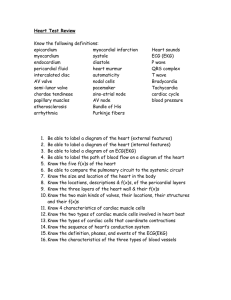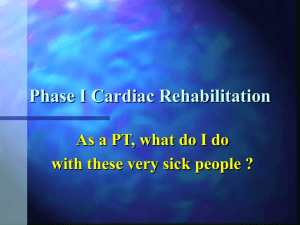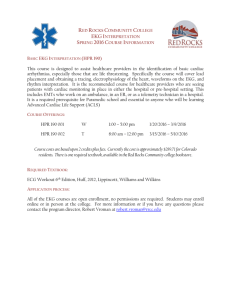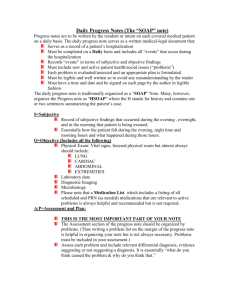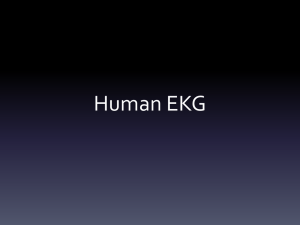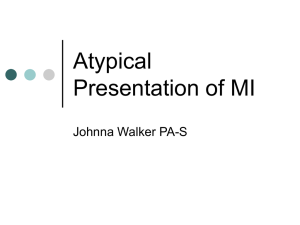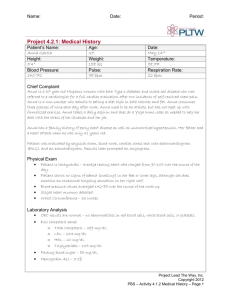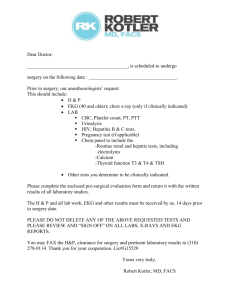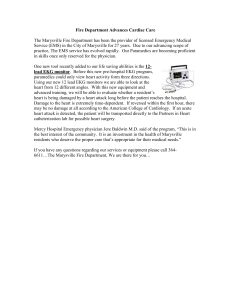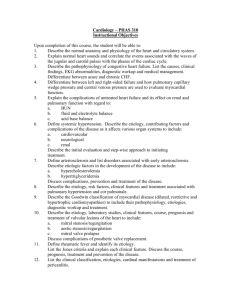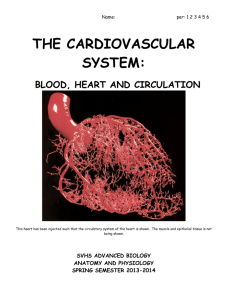Myocardial Infarction Case Study: ER Management & Post-Cath Care
advertisement
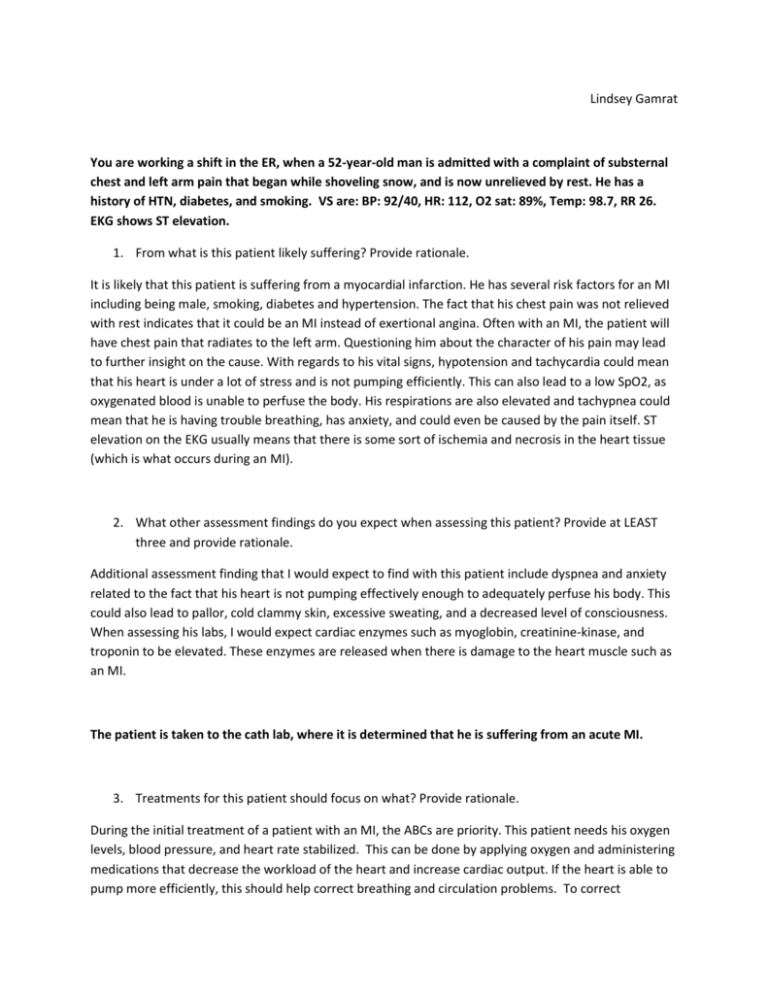
Lindsey Gamrat You are working a shift in the ER, when a 52-year-old man is admitted with a complaint of substernal chest and left arm pain that began while shoveling snow, and is now unrelieved by rest. He has a history of HTN, diabetes, and smoking. VS are: BP: 92/40, HR: 112, O2 sat: 89%, Temp: 98.7, RR 26. EKG shows ST elevation. 1. From what is this patient likely suffering? Provide rationale. It is likely that this patient is suffering from a myocardial infarction. He has several risk factors for an MI including being male, smoking, diabetes and hypertension. The fact that his chest pain was not relieved with rest indicates that it could be an MI instead of exertional angina. Often with an MI, the patient will have chest pain that radiates to the left arm. Questioning him about the character of his pain may lead to further insight on the cause. With regards to his vital signs, hypotension and tachycardia could mean that his heart is under a lot of stress and is not pumping efficiently. This can also lead to a low SpO2, as oxygenated blood is unable to perfuse the body. His respirations are also elevated and tachypnea could mean that he is having trouble breathing, has anxiety, and could even be caused by the pain itself. ST elevation on the EKG usually means that there is some sort of ischemia and necrosis in the heart tissue (which is what occurs during an MI). 2. What other assessment findings do you expect when assessing this patient? Provide at LEAST three and provide rationale. Additional assessment finding that I would expect to find with this patient include dyspnea and anxiety related to the fact that his heart is not pumping effectively enough to adequately perfuse his body. This could also lead to pallor, cold clammy skin, excessive sweating, and a decreased level of consciousness. When assessing his labs, I would expect cardiac enzymes such as myoglobin, creatinine-kinase, and troponin to be elevated. These enzymes are released when there is damage to the heart muscle such as an MI. The patient is taken to the cath lab, where it is determined that he is suffering from an acute MI. 3. Treatments for this patient should focus on what? Provide rationale. During the initial treatment of a patient with an MI, the ABCs are priority. This patient needs his oxygen levels, blood pressure, and heart rate stabilized. This can be done by applying oxygen and administering medications that decrease the workload of the heart and increase cardiac output. If the heart is able to pump more efficiently, this should help correct breathing and circulation problems. To correct blockages that may have caused the MI in the first place, the patient may have a stent or balloon angioplasty performed in the cath lab. These will help open up the blocked vessel and allow blood to flow to the heart. It will be important to monitor this patient for EKG changes because arrhythmias can occur after an MI and after cardiac catheterization. The patient should be on telemetry so that their EKG can be monitored constantly. Pain management will also be important in the treatment of this patient. Opioids are usually most effective in treating pain related to an MI. Controlling the patient’s pain will help them relax and decrease their anxiety so that they are able to rest and recover. Prior to a cardiac catheterization, the nurse should make sure that the patient understands the procedure and has signed a consent form. The patient should be NPO for 8 hours prior to the procedure if possible and checked for iodine or shellfish allergies because they could also have a reaction to contrast dyes. All metal should be removed from their body and a baseline set of vitals and an EKG should be taken so that there is something to compare to post-catheterization. 4. Describe the post-catheterization care that you will provide for this patient, including assessments. Provide rationale. Following a cardiac catheterization, the main priorities for the nurse to monitor are bleeding and infection. The site should be assessed for signs of bleeding, both externally and internal hematoma formation, as well as systemic signs of bleeding (hypotension, tachycardia, pallor, altered level of consciousness). Patients will often have to be immobile for a period of time to prevent bleeding. Vital signs should be assessed every 15 minutes until stable. Signs of an allergic reaction and the EKG should continue to be monitored as well. Arrhythmias are common after cardiac catheterizations due to a sudden change in blood flow to the heart. Another complication could be a clot forming at the puncture site that obstructs blood flow to the extremity. Pulses and capillary refill should be assessed as well as monitoring the patient for leg pain that could indicate an occlusion. Infection is important to prevent because infection at the site can lead to infection in the blood and heart that can then travel to the rest of the body. Since the puncture site is often at the femoral artery in the groin, preventing infection can often be challenging. The puncture site and dressing should be kept as sterile as possible and assessed often for signs of an infection (redness, warmth, pain, itching).
